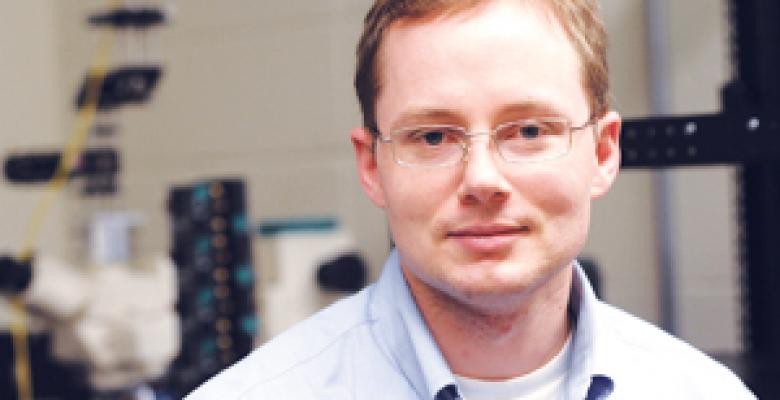Englund, an assistant professor of electrical engineering with a joint appointment in the Department of Applied Physics and Applied Mathematics, works in quantum photonics, the transmission and processing of data in the form of photons, the smallest particles of light. This line of research has potential real-world applications for any agency or company dealing with confidential information, including banks, hospitals and the government.
In September, Englund won a Presidential Early Career Award for Scientists and Engineers (PECASE), the government’s highest honor for young researchers in science and engineering, for his work using photonic networks to process and transmit information.
He was nominated for the award, which carries a $500,000 research stipend over five years, by the Air Force Office of Scientific Research, which singled out his “pioneering contributions” to the field. Earlier this year, Englund also received a Sloan Research Fellowship in Physics.
“It’s a lot of fun to work at the frontier of research because new concepts come up all the time,” said Englund, who works at the Schapiro Center for Engineering and Physical Science Research. “I think we’re working at an exciting junction—where researchers can apply cutting-edge principles from physics to do new things in engineering that were never thought possible.”
These innovations include devising new ways to watch neurons in the brain work. That could help doctors better understand diseases like epilepsy, which is characterized by dysfunctional electrical activity in the brain, and develop computers that could assist in the design of targeted medical treatments on a molecular and atomic level.
In the area of information technology, Englund and his team are homing in on the weak link in data transmission—that encrypted information can be decrypted, or cracked, by finding the right key. Englund is sending data encoded in photons to prevent hacking. Any disturbance would alter the state of the photons, alerting receivers to the breach. In theory, such a system would be absolutely secure.
Englund, who grew up in Germany and California, did his undergraduate work at the California Institute of Technology, earned a Ph.D. in applied physics from Stanford and was a postdoctoral fellow in physics at Harvard. He joined Columbia’s faculty in 2010.
His biography on the University website links to a personal page revealing an interest in piano and long-distance running, including a 2 hour, 50 minute finish in the 2008 Boston Marathon—finishing ahead of Lance Armstrong. It also offers quirky evidence of the wide-ranging and collaborative nature of his scientific inquiry.
In a 2007 blog post, Englund speculated that a well-engineered machine such as a car engine has about the same number of cycles as a human has heartbeats—about a billion over a lifetime. “Maybe all materials are limited to roughly this number of cycles before major structure damage builds up?” he wrote. “Anyone got an explanation?”

